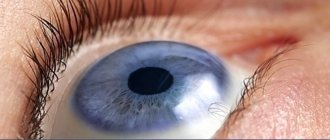Causes of headaches
An excessively stressful rhythm of life, background noise on the streets in cities, stress, and limited time for rest often become causes of chronic pain in the head. If you eliminate the source of discomfort, stressful situations, for a while, the general condition of a person improves significantly. If cephalalgia persists, there is a high risk of the presence of complex pathology that requires medical correction:
- high pressure inside the skull associated with vascular diseases;
- migraine, accompanied by nausea, light and sound sensitivity;
- post-traumatic hematomas in the head;
- tumor formations;
- aneurysms;
- inflammatory foci in brain tissue;
- infectious diseases of the respiratory system, nasal congestion;
- pregnancy period or critical days of the menstrual cycle;
- damage to the trigeminal nerve;
- allergic reactions.
If a person suffers from osteochondrosis of the cervical spine, pain in the head in the forehead and temples also becomes chronic. This is due to irritation or compression of the neck vessels that supply the brain and nerve canals. When the primary disease is eliminated, the patient's condition returns to normal. If no other physiological causes are found, we may be talking about a vegetative-vascular disorder.
Why does my forehead hurt?
Sinusitis
A common cause of pain in the forehead projection is sinusitis. Pain syndrome occurs as a result of the inflammatory process, the accumulation of discharge in the accessory sinuses. The symptom is more disturbing in the morning, because a lot of fluid accumulates in the sinuses during the night. It is observed in the following diseases:
- Frontit.
In a mild form, the pain is insignificant; signs of rhinitis prevail. The moderate form is accompanied by hyperthermia, intense local pulsating, bursting pain in the eyebrow area. Possible irradiation to the temple, crown, feeling of pressure behind the eye. In severe cases, the pain is very strong, sometimes unbearable. Severe intoxication, swelling of the eyelids, puffiness of the face, lacrimation, and photophobia are noted. - Sinusitis.
It manifests itself as febrile, less often - subfebrile temperature, pain in the projection of the maxillary sinus, forehead, cheekbone, root of the nose, sometimes radiating to the temporal region, half of the face. There is lacrimation, copious discharge from the nose, first liquid, then thick, greenish, cloudy. - Ethmoiditis.
As a rule, it develops against the background of other pathologies, so the first signs of the disease go unnoticed. The predominant symptom is a headache with the epicenter behind the eyes, under the bridge of the nose. The pain radiates to the forehead and intensifies when the head is tilted. The sense of smell and nasal breathing are impaired, the temperature rises, and intoxication syndrome occurs. - Pansinusitis.
The most severe form of sinusitis, in which inflammation spreads to all sinuses. It is characterized by intense pain in the area of the eyebrows, orbits, forehead, back of the head, crown of the head, aggravated by palpation, sometimes radiating to the lower jaw. Painful sensations spread to the entire head and intensify with movement. Nasal breathing disorders, anosmia, and severe intoxication are detected.
Inflammatory lesions of the central nervous system
The cause of pain in the forehead in inflammatory diseases of cerebral structures is intracranial hypertension, caused by increased production of cerebrospinal fluid. With meningitis, severe pain in the back of the head prevails, which can spread to the forehead or the entire head. Severe intoxication, increased tone of the occipital muscles, and positive meningeal symptoms are noted.
Painful sensations of similar localization also occur with various types of encephalitis. Significant hyperthermia, weakness, nausea, vomiting, and dizziness are observed. Possible muscle weakness, impaired salivation, signs of damage to the cranial nerves. In some forms of encephalitis, seizures occur, sometimes hallucinations, and other mental disorders.
Vascular pathologies
Arterial hypertension can be primary (essential hypertension) or provoked by other diseases (symptomatic hypertension). Secondary forms are caused by pathologies of the central nervous system, endocrine organs, kidneys, renal and extrarenal vessels. Characteristic features of the pain syndrome are symmetry and occurrence in the forehead or back of the head. The pain is pulsating, bursting, aggravated by sudden movements or loud sounds.
In patients with spondylogenic vertebrobasilar insufficiency, pain appears suddenly against the background of awkward movements. Covers half of the head. It spreads from the back of the head to the forehead, temple, orbit, and sometimes radiates to the upper limb. At the time of the attack, a fall occurs without loss of consciousness or syncope. The skin of the neck becomes pale, with a marbled pattern, and a veil and “spots” appear before the eyes.
Forehead pain
Intracranial hypertension
Pain is the main symptom and is localized in the crown and forehead. Symmetrical, accompanied by pressure on the eyes from the inside, increasing when the direction of gaze changes. In some cases, nausea and vomiting are observed. In an acute course, the pain syndrome is pronounced, quickly intensifies, in a chronic case it is moderate, constantly bothers you or occurs with periodic fluctuations. Intracranial hypertension is accompanied by the following pathological conditions:
- Space-occupying formations:
primary and metastatic neoplasia, abscesses, hematomas, cysts, aneurysms. - Brain edema:
ischemic stroke, hepatic encephalopathy, hypoxia, exogenous intoxication, brain contusion. - Increased blood supply to the brain:
hypercapnia, hyperthermia, dyscirculatory encephalopathy. - Disturbances in the production and circulation of cerebrospinal fluid:
various forms of hydrocephalus due to congenital defects, acquired lesions (for example, adhesions in arachnoiditis).
Ophthalmic diseases
The cause of pain in the eye sockets and forehead area is constant overstrain of the organ of vision. The symptom is observed in pathologies such as:
- myopia;
- farsightedness;
- astigmatism;
- glaucoma.
Typically, the discomfort increases towards the end of the day, after prolonged work at the computer, reading books, or performing small actions that require good visual control (for example, embroidery). Complaints are determined by the type and severity of the ophthalmological disease; the inability to clearly recognize distant objects or the inability to read small written text is noted.
Migraine
The patient complains of unilateral throbbing or pressing pain with the epicenter in the eye, forehead, temple. Some patients experience weakness, absent-mindedness, and visual phenomena before the onset of a migraine attack. Painful sensations are combined with fear of light and sound, nausea, vomiting, depression or excessive irritability. Provoking factors include stress, physical activity, alcohol intake, and certain foods. Sometimes paroxysms develop for no apparent reason.
Damage to nerves and ganglia
Intense pain impulses, reminiscent of an electric shock, passing from the lateral surface to the center of the forehead and orbit, are characteristic of neuralgia of the orbital branch of the trigeminal nerve. The disease develops as a result of injury or inflammation of the nerve trunk, its compression by a neoplasm or a modified vessel. The duration of the paroxysm can reach 2 minutes, the attacks are repeated several times. The pain is so sharp that patients freeze in place and are afraid to move.
For ganglionitis of the pterygopalatine ganglion, pain in the orbit, frontal region, upper jaw, hard palate is typical, sometimes spreading to the teeth, gum of the lower jaw, back of the head, neck, ear, temple. The painful sensations are sharp, intense, one-sided. They occur spontaneously, more often at night. Accompanied by strong autonomic reactions: redness, swelling of half the face, profuse salivation, lacrimation, nasal discharge. They are provoked by inflammatory diseases of neighboring organs.
Allergic reactions
Pain in the forehead is sometimes accompanied by allergic pathologies: angioedema, rhinitis, urticaria. The appearance of painful sensations is possible during an attack of bronchial asthma. The cause of the symptom is swelling of the mucous membranes, breathing problems, and hypoxia. The pain may be dull or migraine-like. Disappears along with other manifestations of allergies after stopping contact with the allergen and taking an antihistamine.
Fever syndrome
Headache is a constant companion of fever, spreads throughout the head or is localized mainly in the frontal region. Observed with influenza, ARVI. Identified in patients with bronchitis and pneumonia. It is observed in acute pyelonephritis and other diseases accompanied by febrile syndrome. Complemented by malaise, weakness, loss of appetite, myalgia, arthralgia.
Other reasons
Sometimes pain in the forehead occurs as a result of prolonged stay in a room with too high a temperature or, on the contrary, being in the cold without a hat. The symptom is detected in certain diseases of the cardiovascular system, blood diseases, metabolic and endocrine disorders. Patients with neurotic disorders often complain of headaches: neuroses, neurasthenia, anxiety, hypochondriacal disorders. With hysteria, complaints can acquire an unusual, pretentious character.
Non-hazardous conditions
Cephalgia is often observed during pregnancy, especially in the first half, when hormonal levels are greatly unbalanced, immune defense drops, and emotional reactions become poorly controlled. At this time, women often catch colds, suffer from long-forgotten chronic diseases, feel pressure surges, and are under moral stress. All these factors affect the development of pain in the forehead and temples, which are of a compressive, aching nature. Triggers such as:
- unhealthy eating behavior (hunger, overeating, consumption of alcohol, citrus fruits, sweets);
- physical stimuli (sharp sounds, smells, bright lighting);
- change of climate zone;
- sleep problems, fatigue.
The appearance of pain can also be associated with everyday situations when a person is forced or deliberately in the open sun in hot or, conversely, cold, windy weather. Irradiation to the forehead or temples also occurs due to mechanical impact on the eyes. If a person wears contact lenses, it can cause dry eyes and headaches. The composition of the diet also affects the patient’s sense of well-being. If you exclude harmful components from the diet (caffeine, alcohol, fast food, processed foods, smoked foods), the discomfort in the head may disappear on its own.
Treating headaches at home
There is no universal remedy for headaches, but at home you can try to reduce discomfort in cases where they do not require immediate consultation with a specialist.
- Essential oils of peppermint, lavender, chamomile, and lemon have a calming effect. It is enough to lightly rub your temples, the back of your head, and your neck (in places where the vein pulsates).
- Strong, sweet green or black tea with honey reduces the intensity of pain.
- Coffee often helps relieve pain: the caffeine it contains constricts blood vessels in the brain and relieves discomfort.
- A cold wet compress applied to the forehead partially eliminates the discomfort.
If your headache is severe, try to sleep in a dark, ventilated room.
Dangerous reasons
When a patient first consults a doctor with complaints of headaches, blood pressure (BP) is checked, since this factor ranks first among the possible root causes of cephalgia. Bad habits, stress, long-term drug therapy, lack of sleep, an inactive lifestyle and changes in weather conditions can increase blood pressure.
Soreness always accompanies infectious diseases, including the common cold. The most dangerous pathology caused by infection is meningitis, when the meninges become inflamed when viruses or bacteria penetrate them. Along with bursting pain, fever, severe nausea and vomiting appear, which does not lead to relief. The fever cannot be relieved with conventional painkillers. The disease is treated exclusively in a hospital setting.
Another severe anomaly is a neoplasm in the skull, which can be benign or malignant. As the tumor grows, discomfort in the head always increases, which becomes unbearable at a certain stage. At the first suspicion of a tumor object, a neurological diagnosis is carried out, and then an oncologist is involved in the work.
Headache during pregnancy
Headaches are common during pregnancy: the symptom is especially pronounced during the 1st and 2nd trimesters. There may be several reasons that provoked the appearance of an unpleasant sensation:
- hormonal changes in the body and, as a result, vasospasm;
- a sharp jump in blood pressure due to increased weather sensitivity;
- stuffiness and staying in an insufficiently ventilated area;
- lack of sleep;
- curvature of posture.
Headache during pregnancy, especially if it appears more than once, should under no circumstances be ignored. Self-medication during this delicate period is strictly contraindicated, therefore no medications should be taken without the knowledge of the general practitioner.
Research methods
Painful manifestations are not an independent pathology, but only one of the symptoms. It is not specific, so it is difficult to make an accurate diagnosis based only on the patient’s complaints. It is necessary to take into account the accompanying manifestations and conduct hardware diagnostics that will identify the root cause of the abnormal condition. The following procedures are prescribed as diagnostic procedures:
- Laboratory blood analysis.
- Cardiogram.
- Blood pressure measurement.
- CT scan of the brain and skull.
- Dopplerography.
- Ultrasound of the vessels of the head and neck.
- MRI of the brain.
Tomographic procedures are recognized as the most informative research methods. Only targeted scanning can provide comprehensive data on the state of internal brain tissue, nerves, and vascular tracts. Only through tomography can tumor formations of any quality and stage, even microscopic, inflammatory foci, meningeal zones be detected. In one short procedure, doctors receive comprehensive information about the pathology and condition of the patient.
Diagnostics
People come to a therapist and neurologist with headaches. Additionally, patients are asked to undergo an examination by an ophthalmologist to assess the condition of the fundus. Further testing to determine the cause of headaches includes:
- complete blood count to rule out infections;
- EEG - determines the electrical activity of the brain, detects epileptic activity, migraine;
- ECG - checking the state of the cardiovascular system;
- analysis of thyroid hormone levels;
- Ultrasound of the vessels of the neck and head;
- Ultrasound of the thyroid gland;
- X-ray of the cranial sinuses - to determine ENT diseases.
Even a complete examination does not guarantee that the cause of the pain will be discovered. But it allows you to exclude serious diseases or identify them and select therapy.
Read also: Headaches in the temple area
Treatment
Restorative procedures depend on the underlying cause of the pain. For chronic fatigue and overstrain, quality rest and a change of environment, fresh air, and taking natural sedatives are recommended. Inflammations and infections require targeted treatment with medications, including antibiotics. Problems with the cervical spine are solved by massage, exercise therapy, and physiotherapy. Cystic and tumor processes are considered individually, the issue of surgical treatment with removal of the pathological object is decided.
Preventive diagnostics
After treatment, especially during surgery, re-diagnosis is required. It is aimed at monitoring the manipulations performed, assessing the quality of the operation performed, and identifying relapses. The safest method of preventive examination is MRI, as it does not cause radiation exposure. You can undergo a scan at any clinic in the city that has the necessary equipment. You can find the nearest tomography centers on our service; just use the search filters. Compare offers, choose the best clinics and sign up for a CT or MRI with discounts from the service.









